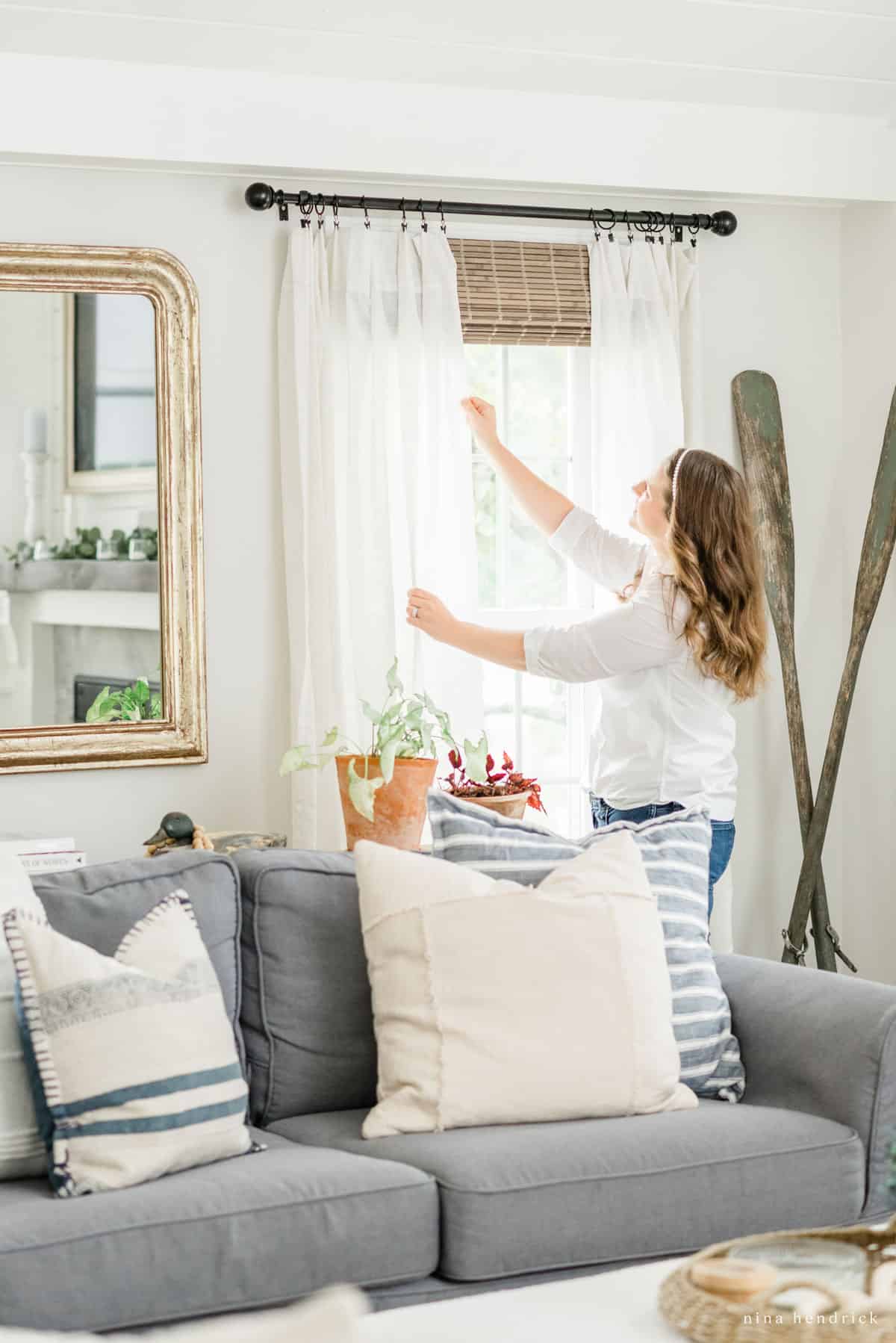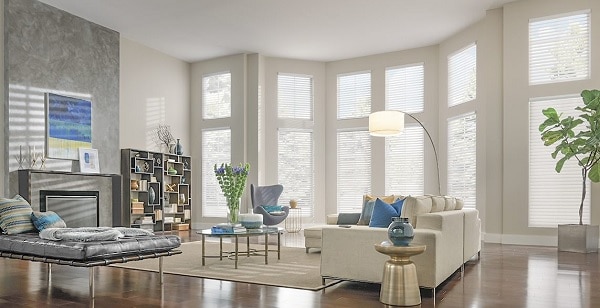The Ultimate Guide to Blinds: Kinds, Advantages, and Selecting the Right Fit for You
The world of window treatments is huge and varied. Blinds are available in various styles, each offering distinct benefits for various settings. Understanding these choices is vital for making notified decisions. In addition, elements like product option and room functionality play a substantial duty. As one considers the best equilibrium in between looks and functionality, the nuances of measuring and maintaining blinds additionally become essential components. What should one prioritize when choosing the suitable home window option?
Sorts of Blinds: A Detailed Summary
Blinds function as both practical and aesthetic components in indoor design, supplying different options to match diverse preferences and demands. Among one of the most popular kinds are Venetian blinds, defined by straight slats that can be changed for light control and personal privacy. Roller blinds, understood for their simpleness and flexibility, come in a series of patterns and products, making them suitable for standard and modern-day settings. Vertical blinds, commonly utilized for bigger windows or gliding doors, permit very easy change and are frequently made from textile or vinyl.
Roman blinds, with their sophisticated folds, add a touch of refinement to any space, while cellular tones offer insulation and power performance. Furthermore, bamboo blinds provide a natural, environment-friendly alternative, infusing areas with heat. Each type has one-of-a-kind functions and designs, ensuring property owners can discover the excellent fit for their certain decoration and useful needs.
Advantages of Installing Blinds in Your Home
The setup of blinds in a home uses a number of substantial benefits. They offer improved personal privacy control, permitting homeowners to manage exposure from the exterior. Furthermore, blinds add to energy performance by aiding to manage indoor temperatures, lowering the reliance on heating and cooling down systems.
Improved Personal Privacy Control
When home owners look for to boost their home, installing blinds provides a substantial benefit in privacy control. Blinds provide a flexible service for regulating visibility from both the exterior and interior of the home. By changing the slats or elevating the blinds, people can easily manage the amount of light getting in while all at once blocking the view from outdoors. This flexibility enables property owners to develop a comfy environment without sacrificing all-natural light. Furthermore, various designs and materials are available, guaranteeing that homeowners can select alternatives that effortlessly blend with their design while enhancing privacy. Eventually, the installation of blinds works as an efficient means to guard personal room, urging leisure and assurance within the home atmosphere.
Energy Effectiveness Improvement
Mounting blinds not only enhances privacy but also substantially contributes to power efficiency in the home. By managing natural light and reducing warmth transfer, blinds can assist keep a constant indoor temperature level. During warmer months, shutting blinds can shut out extreme sunlight, therefore reducing the dependence on a/c. Conversely, in cooler months, they can give insulation by trapping warmth, decreasing home heating costs. Additionally, energy-efficient blinds, such as mobile shades, are developed particularly to minimize energy loss. By purchasing quality blinds, home owners can create a much more comfy living setting while also reducing power expenses. Inevitably, the installation of blinds offers as a sensible service for those looking for to enhance both comfort and energy effectiveness in their homes.
Just how to Choose the Right Blinds for each and every Area
Just how can one determine one of the most ideal blinds for each space in a home? The selection process starts with reviewing the room's function and setting. In living locations, flexible blinds that permit light control while ensuring privacy are optimal. In bed rooms, power outage blinds can boost sleep quality by blocking out outside light.
Bathroom and kitchens require moisture-resistant choices to stand up to moisture, making plastic or faux timber blinds ideal selections. Additionally, the wanted aesthetic plays an essential duty; collaborating blinds with the area's decoration enhances the general ambiance.
Consider the amount of natural light each area obtains; lighter blinds might be more effective for dark areas, while darker alternatives can include warmth to sunlit spaces. Eventually, recognizing particular requirements and preferences for functionality and design will certainly assist house owners in making educated choices tailored to each area's one-of-a-kind needs.
Material Options: Wood, Plastic, Textile, and More

Timber Blinds Perks
Timber blinds are a popular choice among property owners seeking a blend of looks and capability. One substantial advantage of timber blinds is their all-natural elegance, supplying a cozy and inviting appearance that improves any type of interior decor. They are available in different surfaces and colors, permitting customization to match individual design. Furthermore, wood blinds offer outstanding light control and personal privacy, as their slats can be quickly adapted to filter sunshine while keeping seclusion. Their longevity is another advantage; with proper treatment, timber blinds can last for several years without shedding their appeal (Phoenix motorized blinds). Additionally, they have protecting homes, assisting to control indoor temperature levels and potentially lowering energy expenses. Overall, wood blinds combine beauty and functionality, making them an optimal choice for several homes
Plastic Toughness Features
Plastic blinds stand apart for their exceptional longevity, making them a sensible choice for numerous atmospheres. These blinds are resistant to moisture, making them suitable for areas such as bathrooms and cooking areas where humidity can be an issue. Unlike timber, plastic does not warp, split, or fade under sunshine, ensuring durable efficiency and minimal upkeep. In addition, they are available in a selection of styles and colors, enabling property owners to tailor their look without compromising sturdiness. Vinyl blinds are additionally easy to tidy; a basic clean with a moist towel is frequently adequate to maintain them looking fresh. Overall, their durability and reduced maintenance make from this source vinyl a preferred choice amongst homeowners seeking both capability and visual charm.
:max_bytes(150000):strip_icc()/27656_N.Note_uston-LivingRoom-F-0ad7e7a8a0bb482ca856525173ab736c.jpg)
Material Options Introduction
Blinds come in a selection of material options that provide to various visual and useful requirements. Common materials consist of timber, vinyl, and fabric, each offering special benefits. Wood blinds provide a timeless, cozy aesthetic and excellent insulation yet need upkeep to avoid bending. Plastic blinds are moisture-resistant and sturdy, making them ideal for high-humidity areas like cooking areas and shower rooms. Fabric blinds, offered in countless colors and patterns, supply flexibility and soft qualities, enhancing home decoration while giving varying levels of light filtration. Additionally, choices like fake timber use the look of all-natural wood with included durability. When choosing blinds, it is critical to assess the certain needs of each area to ensure peak performance and design.
Measuring and Setting Up Blinds: Tips for Success
Determining and mounting blinds might appear uncomplicated, careful interest to information is crucial for attaining an excellent fit. It is important to measure the home window structure properly, noting both the width and elevation. For inside installs, deduct a small quantity from the width to guarantee a clean fit, while outside places need to expand past the structure for far better light control and appearances. Using a steel measuring tape is recommended for precision.
When mounting, gather all required tools, such as a degree, drill, and screws. Adhering to the my response supplier's directions is essential to assure correct setup. It is recommended to pre-drill openings to avoid harming the brackets. Additionally, having a second individual can make the procedure smoother, specifically when lifting heavier blinds. Finally, after installment, examination the callous confirm they run efficiently and adjust as necessary for optimum capability.
Upkeep and Take Care Of Long-Lasting Blinds
Proper upkeep and treatment can greatly expand the life-span of home window coverings. Normal dusting is important; utilizing a soft towel or a microfiber duster can efficiently eliminate dust without scraping surfaces. For much deeper cleaning, a mild service of soap and water is recommended, used with a soft sponge, ensuring that no dampness seeps right into the systems.
For fabric blinds, area cleaning is a good idea, while wooden blinds must be treated with a wood-safe cleaner to maintain their coating. Prevent revealing blinds to too much dampness, warm, or straight sunlight, which can cause bending or fading.
Furthermore, routine evaluation of cables and mechanisms can stop wear and tear. It's sensible to follow producer standards for specific materials, as various blinds might have distinct treatment needs. By taking on these basic maintenance techniques, property owners can assure their blinds remain practical and visually pleasing for years to find.
Regularly Asked Questions
Can Blinds Assist Reduce Power Expenses in My Home?
Blinds can efficiently minimize power prices in a home by offering insulation, obstructing warmth throughout summer, and keeping warmth in winter months. Their capacity to manage light and air circulation improves power performance throughout the year.
Are There Child-Safe Options for Blinds?
Yes, there are child-safe choices for blinds. These include cordless styles, retractable cords, and safety devices that remove dangling cords, guaranteeing a protected atmosphere for kids while preserving performance and visual charm in homes.

Exactly How Do Blinds Contrast to Curtains or Tones?
Blinds generally supply much more specific light control and space effectiveness than shades or curtains. Phoenix custom blinds. They are usually much easier to clean and preserve, while curtains offer a softer aesthetic, and tones can offer differing insulation benefits
Can I Customize the Shade and Layout of My Blinds?
Yes, blinds can be customized in both design and color. Various manufacturers provide a wide variety of options, allowing consumers to pick materials, patterns, and colors that match their individual aesthetic and home decoration.
What Is the Typical Life-span of Different Sorts Of Blinds?
The average life expectancy of blinds varies: timber blinds last 5-10 years, artificial timber 7-10 years, light weight aluminum 5-10 years, and textile shades around 5 years, depending upon maintenance, usage, and exposure to sunlight.
Shower rooms and kitchen areas need moisture-resistant choices to hold up against moisture, making plastic or fake timber blinds appropriate options. Wood blinds provide natural beauty and warmth, while plastic supplies longevity and convenience of upkeep. One considerable benefit of wood blinds is their all-natural elegance, offering a cozy and inviting look that improves any type of interior decor. In addition, timber blinds supply superb light control and privacy, as their slats can be quickly changed to filter sunshine while preserving seclusion. For fabric blinds, place cleansing is recommended, while wooden blinds should be treated with a wood-safe cleaner to keep their surface.